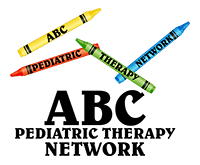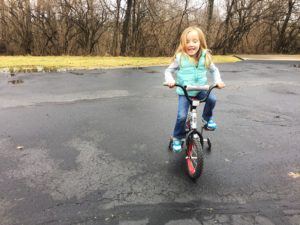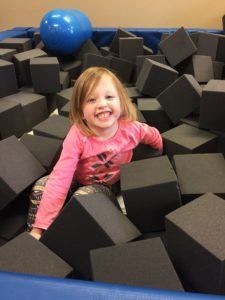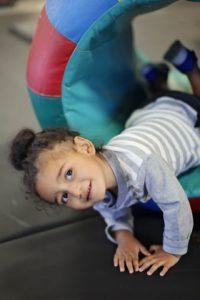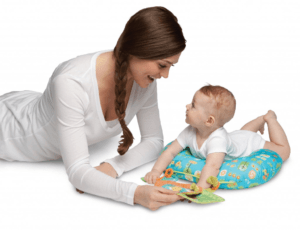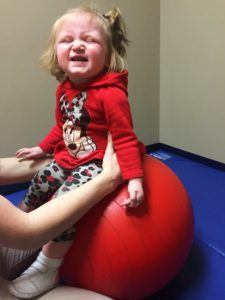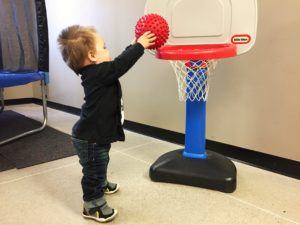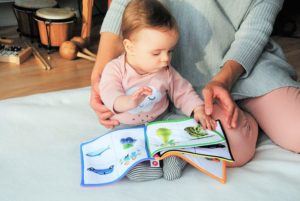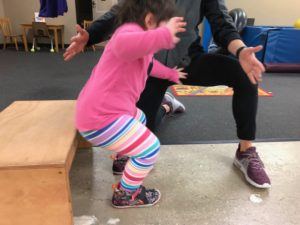Blog
You ever get the feeling that young moms are relying more on the internet for advice than that of their pediatrician?
I was amazed when my younger sister (and new mom) showed me this article that an “expert” mom posted in one of her online mom groups about why tummy time is bad for your baby. I certainly got a little fired up about it, but I also gained a better understanding of information that is being presented to young parents today, now that my children are older and I am out of that “circle”. http://www.deliberateparenting.net/2012/02/01/three-good-reasons-to-not-do-tummy-time/.
As you know we have our rebuttal of the many reasons why tummy time is important: strength of the hands for fine motor control, sensory integration, bilateral coordination, vision, strength, and so on…
A study published by Developmental Medicine and Child Neurology in 2009 investigated if children with torticollis (tight neck muscles) where more likely to have delays in their motor skills. They found that “the CMT (children with Cervical Musculature Torticollis – tight neck muscles) group achieved early motor milestones significantly later than the control group until the age of 10 months, but the risk of delay seems to be more strongly associated with little or no time prone when awake than with CMT”. They also found that “only about one-fifth of the infants spent at least three times a day in the prone position when awake at this age [2 months]” http://onlinelibrary.wiley.com/doi/10.1111/j.1469-8749.2008.03195.x/full
Let’s face it, in our busy world, babies are given less opportunity for playing on their belly than they used to.
Are there kids who never had tummy time who develop perfectly fine. Of course! The challenge is we can’t see into the future lives of our children and we can’t go back and do it over again. I was treating an infant for torticollis and plagiocephaly (flat shaped head)and the mom told me, “My pediatrician told me I should put her on her tummy to play, but I didn’t know what could happen if I didn’t”.
I want to hear less parents say, “I wish I had known”.
There is no doubt that it can be a struggle for new moms who are trying to do all the right things for their new baby while getting conflicting advice. If tummy time is easier, the conflict would not exist and we would have happy babies playing and developing on their tummies!
written by Sarah King, PT, MPT

Riding any type of bike or scooter encourages first and foremost confidence! The timing of mastering the skills of bike riding is significant at these ages to fitting in with their peer group.
What can you do as a parent?
*Be sure to have the bike/scooter available for practice about 6 months before the age the skill should be mastered
*The child will first climb on and off, maybe propel the bike without pedaling, etc to explore the bike
*Have another child of similar age model the bike/scooter successfully
*Practice on a flat surface
*Celebrate successes and encourage when their are falls
*Be sure the bike is the right size! The child should be able to place both feet on the ground so they can safely stop the bike.
*Always wear a helmet!
*Empty parking lots – schools or parks – are a great, flat place to practice
Push Bike – 18 months old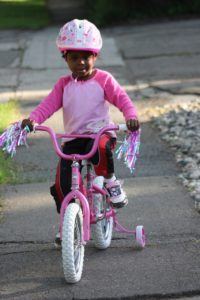
Tricycle – 3 years old
prefer tricycles with rubber wheels for traction
Two wheeled bike with training wheels – 4 years old
Two wheeled bike without training wheels – 5 years old
Three wheeled scooter – 4 years old
Two wheeled scooter – 5 years old
Bike and scooter skills are made up of the ability to balance, use hand-eye coordination functionally, improve strength and endurance of muscles and optimizing reaction time skills. These skills are used in many other areas in a child’s life like carrying a lunchroom tray or kicking a soccer ball while running. Most important of all, mastering bike/scooter skills allows your child to move about your neighborhood with their friends which equals social confidence.
If your child is struggling to master bike or scooter skills at the above stated ages, please reach out to your pediatrician for advice. The physical therapists at https://www.abcpediatrictherapy.com want to help every child to excel at bike and scooter skills. Let us know if we can help!
Read MoreDo you know what your 4 year old should be doing at this age level?
Try these skills below with your child.
BY 48 MONTHS I SHOULD BE ABLE TO………..
____Completes an easy puzzle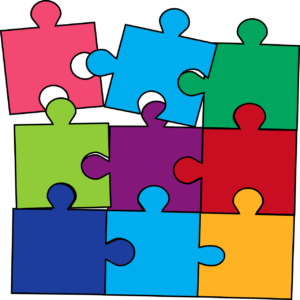
____Cuts piece of paper in half with scissors on a mostly straight line
____Copies a vertical-horizontal cross
____Builds a tower of more than 9 blocks without help
____Cuts out a circle
____Holds marker in a tripod grasps (adult looking)
____Able to make a square and a cross (T)
How did your 4 year old do?
Did you learn that you need to find easy puzzles for your house? Ask friends and family. As children grow out of these toys, you can use theirs.
How about those scissors? Have you been brave enough to get those out? Store them in a high cabinet but get them out for supervised play.
Using a pencil at this age is quite important. Make your 4 year old feel important and have them do “homework” when the older kids are. They will be proud to be able to write like their brother or sister.
Blocks? Dice may be a bit small but they will work. Jenga tiles may be a bit big but they work too. Building challenges fine motor (hand/finger) skills, hand-eye coordination and visual motor skills. Puzzles and blocks are great for young children.
Never stop challenging your child to achieve the next level!
If you challenge your child for a couple months without success, reach out to your pediatrician for advice. At ABC Pediatric Therapy, our Occupational Therapists love to teach parents how to help their child to succeed!
Read MoreEvery parent strives to be the best they know how to be. The trouble is we often do not know what to encourage prior to the age the skill should be mastered. We are here to help you with that.
Do you have a child who is 3 years old or approaching that age?
Use the below checklist to see where your child is and what you should encourage. Often parents have not even offered these opportunities to their children. Now you will know just when to do that.
BY 36 MONTHS I SHOULD BE ABLE TO……..
____Grasps pencil with thumb and fingers instead of fist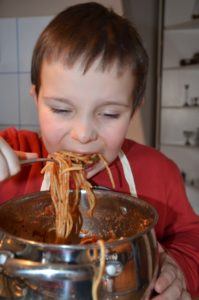
____Screws and unscrews jar lids
____Imitates drawing a horizontal line
____Use a fork with spilling
____Button large button
____Control liquid intake with lips while using a cup
____Wipes around nose with a tissue when reminded
____Push arms into sleeves and pulls clothes to shoulders
____Uses a fork to stab food
How did your child do? Did you learn you need to get the crayons out more? Maybe offer utensils like forks and spoons at dinner. Probably your child has never tried to unscrew the lid to a jar. Now you know that the above skills are such that you should be letting your child succeed and fail while trying to learn to perform the skills on their own.
You might need to get a pencil grip for their pencil to encourage the correct grip.
Does your child have clothes with buttons? If not, maybe you can find dress up clothes or a siblings shirt for practice.
Weekends are a great time to try to plan for extra time to allow your child to dress themselves. This will be less frustrating for all if you can plan a time so you and your child are not rushed.
When you are at home, have your child wipe their own nose in front of a mirror. This will give visual feedback with your verbal tips so your child is successful.
If after a couple months of trying to master these developmental milestones with your child you are not have the success you want, reach out to your pediatrician. Our Occupational Therapists love to teach parents tips on how to help their child.
Read MoreThe goal is for you to get educated as a parent. Know what developmental milestones your child should meet and at what age. Then you are ready to challenge your child leading up to that age so they have the skills mastered at the age they should.
Below is a list of some of the speech and language skills your child should have by 18 months:
- Uses 10-20 words including names

- Combines 2 words and names at least 5 things
- Responds to “Yes/No” questions
- Follows simple commands
- Can identify body parts on self
- Retrieves objects from another room when asked
- Understands at least 50 words
- Asks for “More” & “What’s that?”
Is your child able to do all of the above skills?
If you answered yes, well done parent!
If you answered no, you are now armed with the knowledge to make it happen. Do NOT worry! You have plenty of time.
Here are some tips (if you follow this blog you have heard this before):
- Name EVERYTHING in your child’s world. You want to increase their vocabulary. Call a sandal a sandal and not a shoe. Call a jacket a jacket and not a coat. Your job is to share words with your child.
- Siblings in the household? Great! Teach siblings to name everything too. Siblings should make the younger child try to say the word and not allow pointing and grunting to be successful.
- Buy books with real pictures/photos. This will help you to increase the words in your child’s world. In cartoon pictures, a horse can look like a cow or dog. This can be confusing to your child.
- Make sure you are modelling simple sentences. If your child should be speaking in 2 word sentences, then you should talk to them in 2 word sentence like “big dog” and not “the dog is big” or “big boy” and not “you are a big boy”.
If your child is not mastering the above skills within a couple months of you teaching the skills, please consult your pediatrician. Our speech therapists have more tips and tricks to teach you to facilitate developmental speech and language. We are here to help!
Read MoreThe Rock n’ Play Sleeper – That’s right, “sleeper” is far from a safe sleeping position. It is not firm and it is certainly not flat. We all know that.
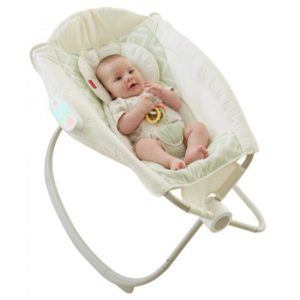
However, parents are still using it. It is rated 4.6/5 stars on Amazon with over 650 reviews, most of them saying it is the best thing ever made for sleep deprived parents.
Well, if the fear of SIDs doesn’t change a parent’s mind, (because it won’t ever happen to me, right??) then, maybe, just maybe, this will:
The American Academy of Pediatrics published a cohort study in 2013 in which 46.6% of infants presented with positional plagiocephaly (flat head). The study concluded “that parental education about how to prevent the development of positional plagiocephaly (flat head) is warranted”. http://pediatrics.aappublications.org/content/132/2/298
Do parents know what could happen if their infant spends too much time in a supine (on their back) positioner?
If torticollis (tight neck muscles) develops, then physical therapy 2 times per week. What new mom has time for that?
And possibly a helmet to reshape the skull in severe cases… Did you know?? These helmets cost over $1,600.00 and most insurance companies do not cover the cost. What new mom has money for that?
Furthermore, the infant needs to wear the helmet for 23 hours a day! What new mom wants their baby in a helmet all day? It is hard to snuggle into mom’s neck with a helmet on your head – no doubt!
I hope you find this this information to be another tool that can be used to help keep your baby safe!
Read MoreUsing a therapy or exercise ball at home with your child can greatly contribute to your child’s success as it provides an extra pair of hands that help your child have greater control over their movements! The ideas below can help your child with muscle strength, using their muscles in a controlled manner, sensory processing and balance control. Activities (Please consult with your therapist to find out which are best for your child):
• Allow your child to lay on their stomach over the ball and roll forward, back and side to side while playing a board game.
• Help your child to lie on their back over the ball and reach to the floor with their hands over their head.
• Have your child rest with their back against the ball with their feet on the floor.
• Have your child sit on the ball with a straight back and feet on the floor and throw a medium sized ball overhead to you or the wall.
• Have your child sit on the ball at the dinner table with feet on the floor to allow your child a sense of movement while staying seated.
• Have your child perform the above exercises while playing board games, watching television, reading, doing homework or while throwing/catching/rolling a ball.
• Some classrooms will allow your child to sit on a ball while doing class work as it can help your child have a sense of movement while staying seated.
Tip: Small children or children who are very involved will do better on a large ball as this provides a larger surface area and they don’t have to work so hard against gravity. If the child has milder problems a smaller ball will be more of a challenge.
Read MoreWHAT DEVELOPMENTAL SKILLS SHOULD MY CHILD BE DOING BY 24 MONTHS?
GROSS MOTOR SKILLS
* Stoops to retrieve toy and returns to stand
* Kicks ball
* Jumps down off low surface, jumps forward
* Goes up stairs without a rail placing both feet on each step
FINE MOTOR SKILLS
* Imitates horizontal and vertical strokes
* Can match 3 shapes
* Builds 6 cube tower
* Places simple puzzle pieces that match a formed shape
SELF HELP SKILLS
* Can help pull up pants
* Puts head through hole of shirt, finds armholes
* Efficient spoon feeder, some difficulties with scooping still
SPEECH/LANGUAGE SKILLS
* Has vocabulary of at least 100 words
* Uses 2 words phrases on a regular basis
* Uses some 2 word utterances
* Uses some pronouns
* Is at least 60% intelligible to all listeners
* Follows 2 step related commands
If your child is not doing most of the skills above, consult your pediatrician and consider getting a therapy evaluation. A therapist can give you ideas of how to encourage development at home.
Read More10 DEVELOPMENTAL BENEFITS OF READING!
- One on one interaction with your child!
- Pre-reading skills (how you hold a book, reading left to right, what words look like)
- Helps develop fine motor skills for turning pages
- Helps develop understanding of action words (running, swinging, eating)
- Teaches concepts of space (under, over, below, in)
- Increases your child’s vocabulary
- Many books promote rhyming skills (important for future reading and writing)
- Strengthens the relationship of listening and talking
- Helps your child learn what sounds the letters make
- Helps your child learn color, number and shape concepts!
PHYSICAL THERAPY AND ORTHOTICS
Physical therapists play a critical role in identifying the need for orthotics. The decision to use orthotics is based on the assessment of range of motion, foot alignment, voluntary control of movement, muscle tone, and functional level of the child. The foot provides stability and mobility; therefore, an orthosis will affect both of these functions.
Orthotics provide stability and improved function by controlling range of motion and posture. They can be used for children who present with hypertonia or hypotonia. In children with hypertonia, orthotics reduce the influence of abnormal tonic reflexes of the foot, ankle, and leg. They decrease spasticity by prolonged stretch and pressure on the tendons of the triceps surea muscle and toe flexors. In children with hypotonia, orthotics help to correct pes planus, therefore giving the child external stability of the foot and ankle.
Children who wear orthotics present with a decreased amount of fixing and compensatory patterns because the orthotics require children to use and strengthen the appropriate muscles. Wearing orthotics result in improved motions of the pelvis, trunk, and lower extremity. They also prevent or support surgery and the use of Botox intervention.
Most Common Types of Orthotics:
- Plantar flexion stop ankle foot orthotics (AFOs) extend just distal to the knee and provide total contact with the ankle and foot. With this type of orthosis, you can choose to have free dorsiflexion control by eliminating the strap that goes around the lower leg. This type of orthosis prevents excessive ankle plantarflexion, and is used with children who require knee and ankle control.
- Supramalleolar AFOs extend just superior to the malleoli. It is used for children who have knee control, but lack ankle control. This orthosis offers the child external stabilization of the ankle and foot.
- Foot orthotics do not extend to the malleoli. Minimal control foot orthotics are shoe inserts, and maximum control foot orthotics extend just distal to the malleoli, controlling the calcaneus. These are used mostly for children who pronate and only need a small amount of support.
Physical therapists at ABC Pediatric Therapy are trained to cast and measure for orthotics. We are also trained in fitting and modifying them as necessary. We most commonly recommend Cascade or Surestep orthotics, and work closely with area orthotists. All orthotics are ordered based on the individual needs of the child. Prices can vary depending upon the type of orthosis. Insurance typically covers a portion of the cost of orthotics with a prescription from the doctor and a letter of medical necessity written by the therapist. It is recommended that parents call their insurance company to verify the benefits covered under their specific insurance plan.
If you have a client who you think could benefit from orthotics, call ABC at (513) 755-6600 –we are happy to answer any questions you may have.
Read More
 Skip to content
Skip to content